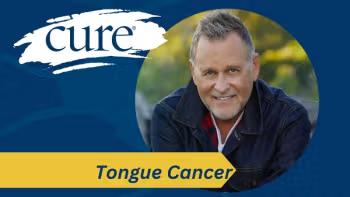
Keytruda Continues to Show Activity in Head and Neck Cancer
Key Takeaways
- Keytruda demonstrated an 18% ORR in pretreated recurrent/metastatic HNSCC patients in KEYNOTE-012 and KEYNOTE-055 trials.
- The FDA granted Keytruda a priority review for recurrent/metastatic HNSCC based on trial data.
Keytruda is showing promise for difficult-to-treat forms of head and neck cancer, according to two studies.
In two recent clinical trials, patients with pretreated recurrent or metastatic head and neck squamous cell carcinoma (HNSCC) demonstrated an objective response rate (ORR) of 18 percent with Keytruda (pembrolizumab). Results were presented at the 2016 Annual Meeting of the American Society of Clinical Oncology (ASCO), a gathering of more than 30,000 oncology professionals in Chicago.
In the first study, known as KEYNOTE-012, the ORR was 18 percent in patients with recurrent/metastatic HNSCC treated with Keytruda. The stable disease rate was 17 percent. In the second study, KEYNOTE-055, the ORR with Keytruda was also 18 percent in a similar population, with a stable disease rate of 19 percent.
In April 2016, the FDA granted a priority review designation to Keytruda as a potential treatment for patients with recurrent/metastatic HNSCC. The application was based on data from the first 50 patients enrolled in the phase 2 KEYNOTE-055 trial and full findings from the KEYNOTE-012 study. In the first 50 patients enrolled in the phase 2 study, the ORR was 18 percent and the stable disease rate was 18 percent.
Under the Prescription Drug User Fee Act, the FDA is scheduled to make an approval decision for Keytruda by Aug. 9, 2016.
"Keytruda has robust and durable antitumor activity in heavily-pretreated patients with recurrent/metastatic head and neck squamous cell carcinoma," said KEYNOTE-012 lead investigator Ranee Mehra, chief of head and neck oncology, Fox Chase Cancer Center. "To see this level of response with Keytruda in patients with head and neck cancer is encouraging and provides further evidence of the potential for Keytruda in the treatment of this disease."
In the phase 2 KEYNOTE-055 study, 171 patients with recurrent or metastatic HNSCC received Keytruda at a flat 200 mg dose every three weeks. The median age of patients was 61 years, and 81 percent were male. The most common ECOG performance status was 1 (70 percent), and HPV status was positive for 41 percent of patients. The median number of prior therapies was two, and nearly half of patients (42 percent) had received three or more prior systemic therapies.
After a median follow-up of seven months, 54 percent of patients experienced a decrease in target lesion size. Median time to response was two months, and 75 percent of responses continued at the time of the analysis.
The median progression-free survival (PFS) was 2.1 months and the six-month PFS rate was 24 percent. The median overall survival (OS) was eight months, with a six-month OS rate of 65 percent.
"This is the first report of phase 2 data showing efficacy of Keytruda in refractory or metastatic head and neck squamous cell carcinoma," said Joshua M. Bauml, from the University of Pennsylvania. "This is particularly encouraging when you consider the fact that our historical record for this group is only a six-month overall survival."
In HPV-positive patients (18 patients), the ORR was 22 percent. In the HPV-negative group (74 patients), the ORR was 16 percent. The ORR was 17 percent in patients with PD-L1-positive tumors (76 percent). In the PD-L1-negative group (13 patients), the ORR was 8 percent.
"I think it is fair to say that Keytruda is a promising therapy for a potential population with limited options," said Bauml.
In the KEYNOTE-012 trial, 192 total patients with recurrent/metastatic HNSCC received two doses of Keytruda. In the first arm, patients with PD-L1-postive HNSCC received the PD-1 inhibitor at 10-mg/kg (60 patients). In the second group, patients received Keytruda at 200 mg every three weeks regardless of PD-L1 status (132 patients).
The median age of patients was 60 years (range, 20-84), and the majority were males (83 percent). Overall, the median number of prior therapies was two, with 45 percent having received three or more lines of systemic therapy. Fifty-seven percent of patients had received prior platinum therapy and Erbitux (cetuximab). The ECOG performance status was primarily 1 (70 percent) and most patients had M1 disease (88 percent).
At the data cutoff in April 2016, 4 percent of patients had experienced a complete response (CR) and 14 percent had a partial response. Sixty percent of patients experienced a decrease in target lesion size, and 65 percent of responders remained on therapy. The median duration of response was not yet reached, with 71 percent of responses lasting 12 months.
In those with HPV-positive disease, the ORR was 24 percent and in those with HPV-negative disease the response rate was 16 percent. There were four CRs in each of the HPV groups. In patients treated with a prior platinum based agent (174 patients), the ORR was 17 percent, with a CR rate of 5 percent. In patients treated with prior Erbitux and platinum therapy (110 patients), the ORR was 15 percent and the CR rate was 5 percent.
Median PFS was two months with Keytruda. The six-month PFS rate was 25 percent and the 12-month rate was 17 percent. Median overall survival (OS) across evaluable patients was 8.0 months. The six-month OS rate was 58 percent. At 12 months, 38 percent of patients remained alive.
"This dataset represents a longitudinal experience with greater than 16 months since the last patient was enrolled," said Mehra. "The survival was encouraging. Keytruda was well-tolerated, and there were no treatment-related deaths."
In the KEYNOTE-055 study, 60 percent of the 171 patients enrolled experienced a treatment-related adverse event (AE) of any grade, which included fatigue (15 percent), hypothyroidism (8 percent), diarrhea (6 percent), decreased appetite (5 percent), nausea (5 percent), AST increase (5 percent) and rash (5 percent). Grade 3 to 5 AEs occurred in 12 percent of patients, and included anemia, AST increase, alkaline phosphatase increase and hepatitis (in 1 percent of patients each). There was one treatment-related death from pneumonitis and three patients discontinued due to AEs.
In KEYNOTE-012, treatment-related adverse events AEs were experienced by 64 percent of the 192 patients enrolled. Grade 3/4 AEs occurred in 13 percent of patients. Overall, 6 percent of patients discontinued therapy due to treatment-related AEs. The most common treatment-related AEs were fatigue (22 percent), hypothyroidism (10 percent), rash (10 percent), pruritus (8 percent), decreased appetite (8 percent), pyrexia (6 percent) and nausea (6 percent). Treatment-related grade 3/4 AEs included ALT and AST increase, fatigue, decreased appetite, hyponatremia, pneumonitis, facial swelling and hypothyroidism.
"There is a manageable safety profile with this drug that is consistent with prior experience with this agent," said Bauml. "There are ongoing phase 3 trials that are investigating the clinical benefit of Keytruda versus traditional cytotoxic chemotherapy."
In the phase 3 KEYNOTE-040 study, Keytruda is being compared with methotrexate, docetaxel, or Erbitux in 466 patients with recurrent or metastatic head and neck cancer. The primary completion date for this study is January 2017, and the study has fully accrued. (NCT02252042).
In a second phase 3 study, Keytruda is being explored as a frontline treatment for patients with recurrent or metastatic HNSCC. The PD-1 inhibitor is being compared with platinum-based chemotherapy plus 5-FU and Erbitux or in combination with platinum-based therapy and 5-FU. This study plans to enroll 780 patients, with an estimated primary completion date of November 2017 (NCT02358031).




